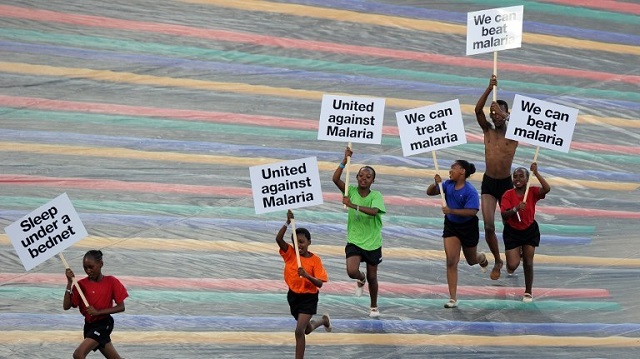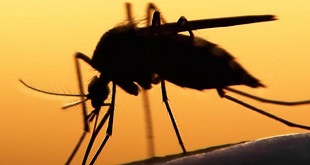
Nearly every minute, a child under five dies of malaria, according to the WHO
Kampala, Uganda | THE INDEPENDENT | Ghana on April 13 became the first country to approve public usage of a new experimental vaccine for children to protect them from malaria.
The R21/Matrix-M malaria vaccine is a low-dose vaccine that can be manufactured at mass scale and modest cost, enabling as many as hundreds of millions of doses to be supplied to African countries which are suffering a significant malaria burden.
The University of Oxford-developed and Serum Institute of India PvT Ltd (SIIPL) – manufactured and scaled up R21/Matrix-MTM malaria vaccine, leveraging Novavax’s adjuvant technology. SIIPL is the manufacturing and commercialisation license holder for the vaccine.
The R21/Matrix-M vaccine has undergone clinical trials in the UK, Thailand, and several African countries. There is an ongoing phase III trial in Burkina Faso, Kenya, Mali and Tanzania that has enrolled 4,800 children. Results from these trials are expected to be reported later this year.
Oxford researchers and their partners last year reported from a Phase IIb trial that a booster dose of R21/Matrix-M at one year following a primary three-dose regime maintained high efficacy against malaria, and continued to meet the World Health Organisation’s Malaria Vaccine Technology Roadmap goal of a vaccine with at least 75% efficacy.
This followed 2021 results from the Phase-IIb trial reporting that R21/Matrix-M demonstrated high-level efficacy of 77%. Recent data from the large phase III trial also show high levels of efficacy and a reassuring safety profile.
The vaccine contains Novavax’s Matrix-M, a saponin-based adjuvant that enhances the immune system response, making it more potent and more durable. The Matrix-M adjuvant stimulates the entry of antigen-presenting cells at the injection site and enhances antigen presentation in local lymph nodes. This technology has also been used successfully in Novavax’s COVID-19 vaccine and is a key component of other development-stage vaccines.
Adar Poonawalla, CEO of the Serum Institute of India Pvt Ltd., said: “Developing a vaccine to greatly impact this huge disease burden has been extraordinarily difficult. We remain steadfast in our commitment to scaling up production of the vaccine to meet the needs of countries with high malaria burden and to support global efforts towards saving lives.”
Ghana’s move marks the first regulatory clearance for the R21/Matrix-M malaria vaccine for use in any country.
It is hoped that this first crucial step will enable the vaccine to help Ghanaian and African children to effectively combat malaria.
In October 2021 the World Health Organisation recommended the broad deployment of another malaria vaccine among children in Sub-Saharan Africa called RTS,S/AS01e vaccine which was widely celebrated. The RTS,S vaccine was first rolled out in a first-of-its-kind pilot malaria vaccine program in Malawi, just days before World Malaria Day on April 25, 2019.
The vaccine, which is called Mosquirix and was developed by GlaxoSmithKline with the PATH Malaria Vaccine Initiative
Describing it as a “historic moment”, the WHO Director-General Tedros Adhanom Ghebreyesus said that the vaccine would increase equity in access to malaria prevention, was cost-effective and could help those unable to access existing prevention measures such as bed nets.
However, other interventions remain vital, health experts stressed, since the vaccine is only 30 per cent effective in reducing severe cases of malaria.
Brian Greenwood, professor of clinical tropical medicine at the London School of Hygiene and Tropical Medicine who played a key role in the vaccine research, said RTS,S did not provide complete protection but had “great potential to reduce death and illness in high burden areas, especially when combined with other interventions such as seasonal malaria chemoprevention and bed nets”.
Expert explanation
When the trial results for the new malaria vaccine developed by scientists at the University of Oxford was first published in early September, Dyann Wirth, Richard Pearson Strong Professor of Infectious Diseases, offered some thoughts in an interview published on September 28, 2022.
On whether the new vaccine could be “world-changing”, Prof. Wirth said “we’ll have to wait and see, because so far there has only been early testing of its efficacy”.
“This new vaccine, called R21, is potentially an improved version of another vaccine, called RTS,S, which the World Health Organisation approved last October for broad use in regions with significant malaria transmission. RTS,S was the first-ever vaccine for a human parasitic infection.
“RTS,S also showed high efficacy in limited samples in early testing, but once it was deployed in a more real-world setting in Phase 3 clinical trials both the predicted and observed efficacy were down closer to 40%-50%, and they’ve stayed that way.”
“It turns out that when you give the vaccine, relative to the transmission season, affects its efficacy,” she said.
In many countries, malaria spread typically peaks during the rainy season, when there is more stagnant water in which mosquitoes can breed.
“I would say that we need to evaluate R21 under more real-world settings, including the Phase 3 clinical trial, which began in April 2021 and runs through December 2023, and includes 4,800 children in four African countries, including two where malaria is a threat throughout the year. I’m optimistic about the new vaccine, but I also recognise that early data is often more promising than when things are actually used in practice,” she said.
When asked about a quote in the press by an expert saying that the development of the new vaccine suggests that it may be possible to end child deaths from malaria in our lifetimes, she was upbeat but cautious.
“I hope that’s true. This is a preventable, treatable disease. No child should die of this,” she said.
She explained: “The reality is that, between roughly 2005 and 2015, childhood deaths from malaria were halved by better implementation of bed nets and diagnosis and treatment. And then things kind of plateaued. A vaccine, which is a completely different strategy, could have an impact if it’s used cleverly, by vaccinating or boosting right before the rainy season to get the maximum effect, while also using the other tools in our armamentarium. I’m very excited about the potential that by using a multi-pronged strategy we could have a dramatic impact”.
New hope
The University of Oxford’s Jenner Institute partnership with the Serum Institute of India has previously led to the development of the Oxford-AstraZeneca COVID-19 vaccine.
The R21/Matrix-M vaccine has demonstrated high levels of efficacy and safety in Phase II trials, including amongst children who received a booster dose of R21/Matrix-M at one year following a primary three-dose regime.
Professor Adrian Hill, Chief investigator, R21/Matrix-M programme, and Director of the University of Oxford’s Jenner Institute at the Nuffield Department of Medicine, said: “This marks a culmination of 30 years of malaria vaccine research at Oxford with the design and provision of a high efficacy vaccine that can be supplied at adequate scale to the countries who need it most”.
Delese Darko, the chief executive officer of Ghana’s Food and Drugs Authority (FDA), told journalists that the R21/Matrix-MTM malaria vaccine developed by Oxford University will be used in immunising children aged 5-36 months against malaria.
Ghana, she said, is the first country to grant market authorisation for the vaccine, which is considered a major breakthrough in the fight against malaria, a common disease Africa.
The approval was based on a satisfactory evaluation of the quality, safety and efficacy data of the vaccine submitted to the FDA, Darko said, adding that the vaccine has a 75 percent success rate.
“The evaluation concluded that the benefits significantly outweigh the risks associated with the vaccine. Again, the vaccine has the potential to reduce the under-five mortality caused by malaria in Africa,” Darko said.
“This is a monumental event for Ghana and the rest of Africa because malaria has been a major killer disease, especially among infants on the continent. So if there is a vaccine that can protect infants against this disease, it is a refreshing development,” said Sammy Ohene, chairman of the FDA’s governing board.
According to official data from the Ghana Health Service, about 20,000 children died of malaria annually with 25 percent of them being under the age of 5 years.
Nearly every minute, a child under five dies of malaria, according to the WHO. It says many of these deaths are preventable and treatable. In 2021, there were 247 million malaria cases globally that led to 619,000 deaths in total. Of these deaths, 77 per cent were children under 5 years of age.
 The Independent Uganda: You get the Truth we Pay the Price
The Independent Uganda: You get the Truth we Pay the Price


